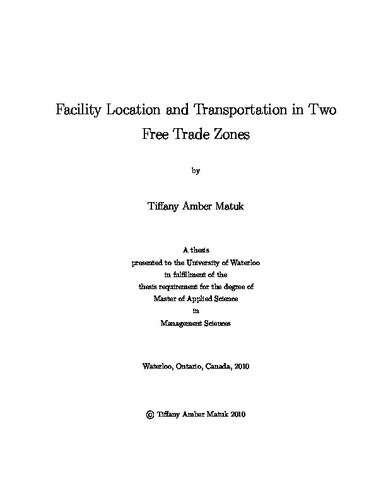| dc.description.abstract | In any supply chain, the location of facilities and the routing of material are important decisions that contribute a significant amount of costs, lowering a corporation's overall profits. These choices become more important when dealing with a global supply chain, whose players span multiple countries and continents. International factors, such as tax rates and transfer prices, must be carefully considered, while the advantages of timely delivery versus cost-effective transportation must be carefully weighed to ensure that customer demands are met at the best possible price.
We examine an international supply chain with plants, distribution centers (DCs), and customers in the North American Free Trade Agreement (NAFTA) and the European Union (EU) regions. The company in question manufactures two sub-assemblies at its plant in Mexico, and then assembles them into a final product at DCs in North America and Europe. To better serve its European customers, the company wishes to locate a new plant in the EU, as well as determine the modes of transportation used to distribute products between nodes, while maximizing overall profit.
The problem is formulated as a mixed integer linear program and is solved in two stages using a Strategic Model (SM) and an Operational Model (OM). In SM, each time period represents one month and we determine the optimal facility locations over a 12-month time horizon. With transportation lead times expressed in days, we can be certain that demand will be fulfilled within a single period, and for this reason, lead times are not considered in SM. At the operational level, however, each time period represents one day, and so lead times must be included as they will affect the choice of mode for a given route. The location results from SM are used as input for OM, which then gives the optimal modal and routing decisions for the network.
A number of cases are tested to determine how the optimal network is affected by changes in fixed and variable costs of facilities, transfer prices charged by plants to DCs, and the differing tax rates of each country. | en |

